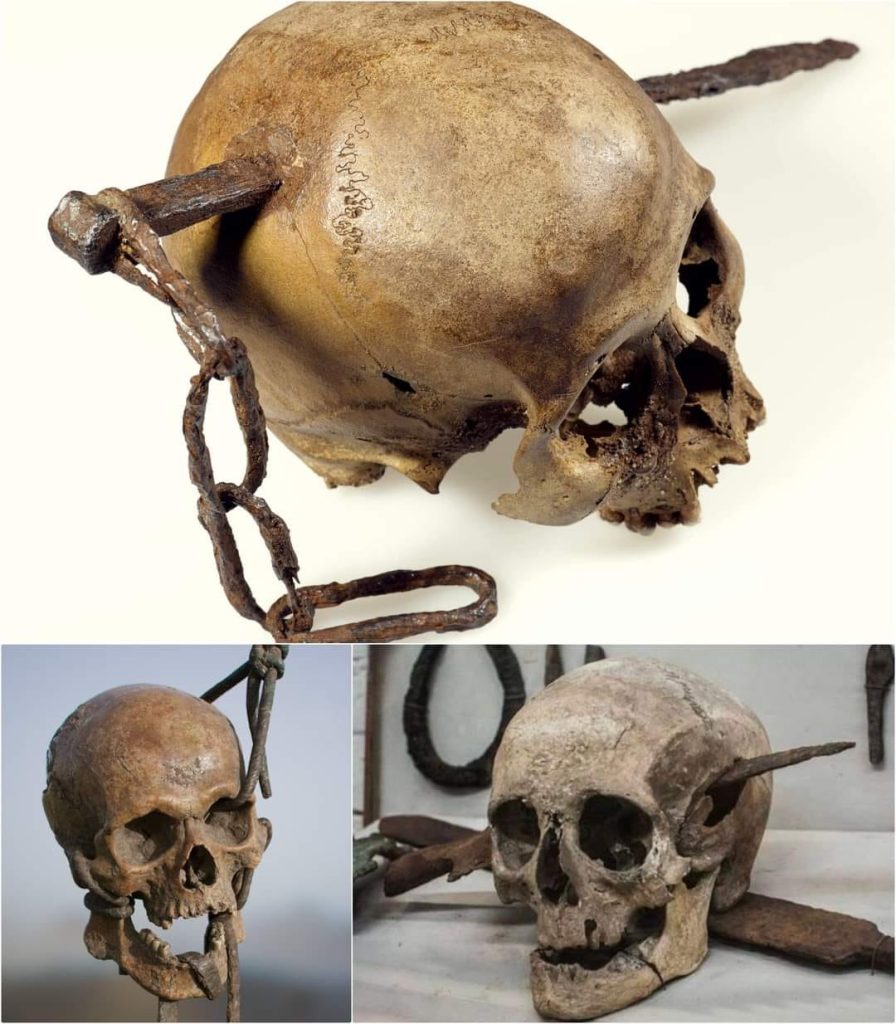As an archaeologist with five decades of experience, I have encountered countless artifacts that shed light on the lives of ancient peoples, but few have evoked the depth of emotion and historical insight as profoundly as the recent discovery of a 2,070-year-old human bone with an iron spearhead still embedded within it. This extraordinary find provides a visceral connection to the brutal reality of ancient warfare, specifically the Roman Gallic wars. It is more than just an artifact—it is a haunting reminder of the personal cost of conflict, frozen in time and preserved through centuries, offering modern society a window into a world long gone but still deeply relevant.

The bone, which belonged to a fallen warrior, has effectively served as a time capsule, encapsulating the final, violent moments of its owner’s life. The iron spearhead, surprisingly intact, still bears a sharp, menacing tip that speaks volumes about the force with which it was driven into the flesh during a fierce battle. For archaeologists, this relic is not merely a piece of metal lodged in bone—it is a powerful narrative tool that allows us to reconstruct the chaos, violence, and desperation of combat during one of history’s most ferocious military campaigns. It tells the story of a warrior—his courage, his fate, and ultimately, his place in the broader scope of history.
Detailed examination of this artifact is now underway, with researchers focusing not only on the bone and the spearhead themselves but also on what they reveal about the broader context of warfare between the Romans and the Celtic tribes. The preservation of the spearhead allows for an unprecedented analysis of the weapon’s design, metallurgy, and purpose. Through this, scholars can gain critical insight into the arms and armaments used during the Roman Gallic wars, shedding light on the types of weapons favored by Roman soldiers and Celtic warriors alike. Moreover, the angle of penetration and the impact on the bone can offer clues about the tactics used in battle—whether this was a close-range thrust or a projectile strike, whether it was part of an ambush or a face-to-face confrontation.
Such findings enrich our understanding of the strategies employed during these wars. The Romans, known for their disciplined legions and strategic military planning, often clashed with the Celtic tribes, whose warfare relied heavily on mobility, ambushes, and fierce hand-to-hand combat. The artifact helps bridge the gap between historical texts and physical evidence, confirming or challenging what we know from ancient writings. It allows us to move beyond theoretical interpretations and into the realm of tangible truth.
But the significance of this discovery goes beyond military tactics and weaponry. It brings us face-to-face with the human cost of war—an individual, likely a young man, who lived, fought, and died in a struggle for land, identity, and survival. His final moments, preserved in bone and iron, serve as a sobering reflection on the sacrifices made by countless others like him throughout history. The bone with the spearhead is not merely a scientific curiosity; it is a human story, one that reminds us of the fragility of life and the devastating consequences of conflict.
The Roman Gallic wars themselves were emblematic of the harshness and ambition of imperial expansion. From 43 to 84 AD, the Roman Empire pushed its way into territories that now comprise modern-day Ireland and Scotland, encountering fierce resistance from the Celtic tribes who inhabited these lands. What followed was a series of brutal confrontations—skirmishes, sieges, and pitched battles—that left a trail of destruction and death. The Roman desire for conquest and the Celts’ fierce defense of their homeland collided in a violent clash of civilizations, and this newly discovered relic serves as a direct link to that turbulent era.
Moreover, the artifact’s significance transcends its historical context. In a world still grappling with the consequences of warfare, this ancient bone offers a powerful reminder of our shared humanity and the enduring scars of conflict. It invites us to reflect on how far we have come and how much further we must go in our quest for peace. The violence that ended this warrior’s life is not confined to the past; echoes of it resonate in modern conflicts, reminding us of the need to learn from history rather than repeat its darkest chapters.
As archaeologists, our duty is not just to uncover artifacts, but to interpret them in ways that bring value to the present. This discovery does just that—it challenges us to remember that every historical conflict was fought not by faceless legions, but by individuals with hopes, families, and futures, many of which were tragically cut short. The bone and spearhead compel us to see the past not as a distant tale, but as a mirror reflecting timeless truths about human nature, ambition, and the pursuit of power.
In conclusion, the unearthing of this 2,070-year-old bone with an embedded iron spearhead is a monumental find that bridges the gap between past and present. It is a testament to the brutality of the Roman Gallic wars and a poignant reminder of the individual lives affected by the sweeping tides of history. Through careful study and reflection, this relic will not only enrich our understanding of ancient warfare but also inspire us to cherish the lessons of the past in hopes of building a more compassionate and peaceful future. Let this artifact stand as a symbol—a call to remember, to understand, and to honor those who came before us, whose stories still shape our world today.





